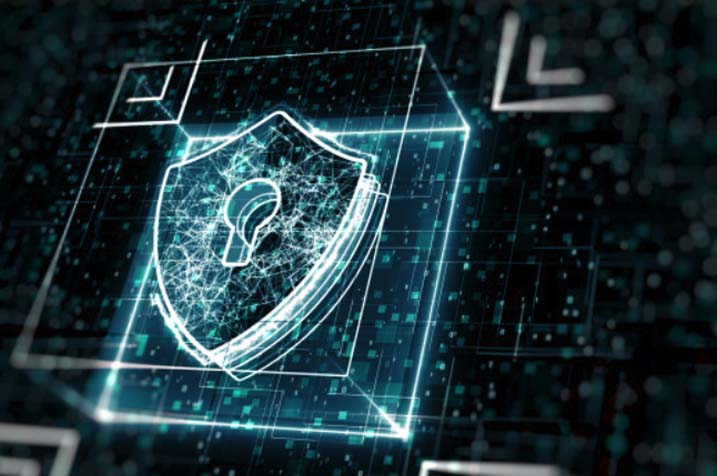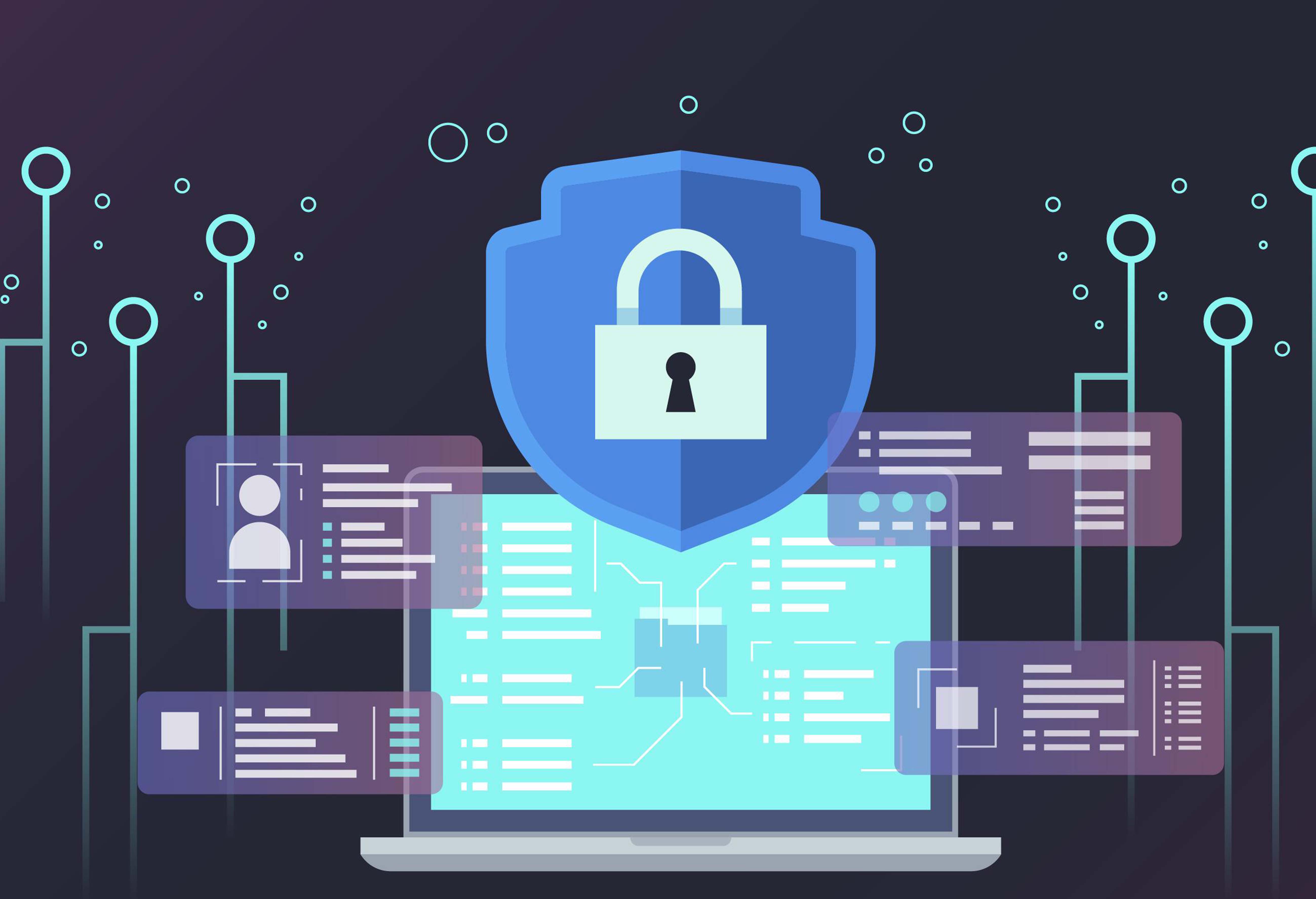
por Rebeca | Jun 9, 2021 | Ciberseguridad, Soffid
The 2020 Global State of Least Privilege Report (Least Privilege Technologies and Solutions) shows that two-thirds of organizations now consider the implementation of least privilege a top priority in achieving a zero-trust security model.
Below, we take a look at some of the critical drivers for the adoption of least privilege Solutions and Technologies. We also explore the failure of traditional systems and how modern solutions such as Software-Defined Perimeter, Secure Web Gateway and Risk-Based Authentication, among others, engender greater enterprise network security.
Access is Responsibility and Least Privilege Technologies and Solutions

According to an Identity Defined Security Alliance (IDSA) study published last year, 79% of enterprises experienced an identity-related security breach in the previous two years. Last year, just as the COVID-19 pandemic gathered momentum, another report revealed a rise in attacker access to privileged accounts, which puts businesses at a greater risk.
It is important to note that in this age where data is everything, access is equal to responsibility. Therefore, the greater access a person has at a given moment; the greater responsibility they have to protect the data that they have access to. According to the State of Security blog, author Anastasios Arampatzis states that the central goal of privilege access management, which he admits covers many strategies, is the enforcement of least privilege.
Privileged accounts are a liability precisely because the data they have access to makes them attractive targets to cyber attackers. The greater the level of access an account has, the more significant the impact of an attack would be. More so, the greater the number of privileged accounts on a network, the more catastrophic an account compromise could be. Basically, every additional privileged account multiplies the risks on a network. Therefore, it is crucial to keep the circle of privilege small in order to limit unnecessary data exposure.
Legacy Systems: The Failure of VPNs to Adequately Secure
Amidst the current challenges in privileged access management, organizations are beginning to explore alternative solutions to traditional VPN technology and other legacy security solutions which have failed in actively securing privileged accounts. One notable problem is the lack of remote user security on many VPN products, and they neither integrate well with identity providers nor properly implement user policies on identity access and authorization. The weakness of VPNs are made more apparent in this age of remote work.

Least Privilege Technologies and Solutions
At the turn of the pandemic, companies had to allow their employees to work from home. This led to a surge in VPN adoption. According to the Global VPN Adoption Index report; VPN downloads reached 277 million in 2020 based on data collected from 85 selected countries.
The cybersecurity landscape can be described as a kind of cat-and-mouse race. In response to this trend, cyber attackers shifted their focus to exploiting VPNs, amongst other techniques such as phishing. However, being a legacy technology that has somehow due to its ubiquity made its way to more modern times, VPNs have become quite weak; based on the assertion that “VPNs are designed to secure data in transit, not necessarily to secure the endpoints. ” it is easy to see why the ‘new normal’ in cybersecurity is the protection of endpoints in an age where data is gold.
Least Privilege Solutions and Technologies
The current overhauling of our approaches to access management and authentication; has given birth to the rising adoption of the cybersecurity of least privilege. This principle is connected to another swelling trend in cybersecurity: the zero-trust model.
True zero trust technologies adopt the principle of least privilege by default.
The need for privileged accounts is common to most information systems. These accounts are necessary to perform scheduled configuration and maintenance tasks, as well as supervening tasks such as the recovery of a hardware or software failure or the restoration of a backup. Due precisely to the need to use these accounts in an unplanned manner, their management must combine security, procedures and flexibility.
In order to effectively manage these accounts, the Soffid product has the necessary logic to Identify accounts. Classify them according to the level of risk and its scheme of use; distribution and assignment to responsible users, automatic and planned password change process. Passwords delivery process to authorized users and automatic injection of passwords, when this injection applies and makes sense.
Conclusion
The principle of least privilege in cybersecurity is not just an exciting fad that would go away soon. Rather, it is becoming a standard model and best practice for network protection in the new normal of cybersecurity.
Sources:
(1) Tripwire
(2) Security Tech

por Rebeca | May 26, 2021 | Ciberseguridad, Recursos, Soffid
Imagine this scenario about Future Trends in Access Management… – If you are the CEO of a mid-sized organization with branches in different continents and three thousand employees, how efficiently could you monitor logins? Perhaps, on a bad day, an employee would have lost their Smartphone or lost the paper in which they wrote the password.In such a case, would you identify that one illegal or criminal login from all the 3000 logins that day?
In this scenario, we are yet to find a universal solution to manage online identities in both the government and the private sector.
Since the IAM space is continuously evolving
Organizations identify new trends in Identity and Access Management to minimize data-breaches, meet regulatory requirements, and manage user identities to the utmost extent.

Years of data breaches stemming from credential theft, attacks targeting privileged user accounts and poor password practices have led to a major evolution in identity and access management technology designed to protect enterprise data.
Five IAM trends are addressing the need for greater user account and network protection.
Identity and Access Management (IAM) has the attention of cybersecurity professionals around the world. The identity and access management market growth has roughly quadrupled over just the last three years, and shows no signs of slowing down any time soon.
The COVID-19 pandemic has raised the visibility of identity & access management (IAM) due to the high priority in getting remote access secured and the increased protection needed around digital transformation initiatives.
In an effort to make organizations more secure, agile and resilient, IAM leaders must improve governance and strengthen privileged access management (PAM) practices to prevent breaches, establish more robust and agile authentication and authorization, and enhance consumer IAM to prevent fraud and protect privacy.
In this rapidly changing business scenario, here are upcoming trends that promise to revolutionize the IAM sector:
1) Adapting Biometrics
As per Global Market Insights, the global biometric market would reach an estimated value of USD 50 billion by the end of 2024. Perhaps one of the rapidly emerging trends in the IAM sector, biometrics like retinal scans, facial recognition systems, and fingerprints, is highly preferred for ensuring authorized users in networked systems.

To counterbalance this threat, the future trend would involve IAM, which relies on biometric data, to get an additional layer of security for protecting the biometric information.
2) Blockchain and Future Trends in Access Management
Blockchain offers features like transparency, reliability, and integrity, making it a popular choice for ensuring data protection with both public and private sectors.
While talking about Blockchain in the context of IAM; the two aspects, the come into play are – Audit trail and self-sovereign identity. Self-sovereign identity is the concept of an individual protecting their entire identity as their personal property rather than let an organization or third-party provider manage it. By keeping the individual’s information protected by encryption in a permanent blockchain across a distributed network system, this concept offers complete individual control over their identity data.
Through the Self-sovereign identity system, the idea is to replace centralized; identity providers and instead let each individual take control and decrypt the data only when required.
Audit trail, a user’s entire login history, access request, permission grants, changes performed, or engagement is recorded. This is helpful for an organization in monitoring activities, detecting fraud, and also meets compliance requirements.
3) Single Sign-On Systems and MFA
While MFA is one of the most popular IAM practices, there is still plenty of scope for its improvement; as data breaches still occur and cause substantial revenue losses. Adaptive Authentication is the advanced version of MFA. Which relies on machine learning capabilities to detect } user behavior or illegal entry.
Adaptive Authentication pulls in all the details of user login in terms of login time. Device, location, browser, and other data, which helps analyze a login attempt’s authenticity. Based on the analysis, if a login attempt turns out to be fishy. The system will ask the user to fill in an MFA to be authenticated.
Another popular IAM industry trend is Single Sign-on (SSO System) usage with MFA. That helps users leverage a unified, singular set of credentials to gain access to networks; data, applications, web, and the cloud.
4) IAM and the Internet of Things (IoT)
With the arrival of the Internet of Things (IoT), there is a massive requirement for Identity Access Management service. Whenever an IoT based device is added to a network, there increases the need to mitigate security risk.
Hence, the current priority is to ensure secure identity access management. On these IoT devices for restricting the entry of hackers into the network. Devices that can pose a threat could feature smart TVs, security cameras, and smart bulbs.
Another technology that could prove to be a breakthrough is working on IAM systems. Which require the system to authenticate a user’s access through numerous devices.
Also, in numerous cases, securing IoT devices would be achieved by embedding; the device identities in the processing chip and being an integral part of the hardware.
5) Artificial Intelligence in IAM
An aspect of Identity Management, Context-based identity, also is responsible for comparing data about. This data includes numerous behavioral patterns like physical location, IP address, usage, preferences, and machine address.
Leveraging AI programming algorithms for data mining helps discover data patterns. That are extremely helpful in reducing fraud and identifying risks. This technique has been highly useful in banking systems across the globe.
6) Identity Access Management for Cloud Services
Since the cloud is in great demand, organizations have been shifting to cloud. Services to provide advantages such as efficiency, scalability, and flexibility.
Namely, Access Management, Identity Management, Access Governance, and PAM. We help you elevate your organization’s goals towards digital transformation and help develop data strategies. In line with revenue maximization and achieve customer satisfaction.
(1) Gartner
(2) Search Security

por Rebeca | Ene 27, 2021 | Soffid
Privileged account management (PAM) is emerging as one of the hottest topics in cybersecurity — and it’s easy to understand why. Cybercriminals are relentless when it comes to finding and compromising their targets’ privileged credentials to gain unfettered access to critical assets. PAM also protect against administrative mistakes and if they do happen, it allows for the traceability of the person involved and to know the reason.
Chief information security officers (CISOs) have plenty of incentive to manage access to privileged accounts robustly and comprehensively. However, market drivers for PAM solutions go beyond the risk of financial consequences due to a breach.
Shockingly, 54 percent of companies today still use paper or Excel to manage privileged credentials. With no shortage of commercially available solutions on the market, why are so many businesses continuing to use manual processes?
Many vendors offer point solutions, such as password managers and session recorders, that only accomplish a portion of what is needed in (yet another) technology silo. Plus, more robust PAM solutions are often hard to deploy, unintuitive and not integrated with related critical technologies that enable security teams to manage privileged accounts holistically. Businesses looking to move beyond spreadsheets should consider new solutions to mitigate risks and gain a rapid return on investment.
Take Privileged Account Management to the Next Level with Soffid
PAM solutions help security teams to:
- Discover all instances of privileged user and application accounts across the enterprise.
- Establish custom workflows for obtaining privileged access.
- Securely store privileged credentials in a vault with check-in and check-out functionality.
- Automatically rotate passwords when needed — either after every use, at regular intervals or when employees leave the company.
- Record and monitor privileged session activity for audit and forensics.
- Receive out-of-the-box and custom reports on privileged activity.
- Enforce least privilege policies on endpoints.
By integrating a PAM solution with identity governance and administration (IGA) tools, security teams can unify processes for privileged and non privileged users. They can also ensure privileged users are granted appropriate access permissions based on similar users’ attributes (e.g., job role, department, etc.) and in accordance with the organization’s access policy. Events related to privileged access are sent to a security incident and event management (SIEM) platform to correlate alerts with other real-time threats, which helps analysts prioritize the riskiest incidents. Integration with user behavioral analytics (UBA) solutions, meanwhile, helps security teams identify behavioral anomalies, such as the issuance of a rarely used privilege.
By investing in PAM tools that integrate seamlessly into the existing environment, organizations can put the full power of the security immune system behind the ongoing effort to protect sensitive access credentials from increasingly sophisticated threat actors. This enables security teams to move beyond inefficient, manual processes and embrace a holistic approach to privileged account management.
Resources:
(1) Security Intelligence









